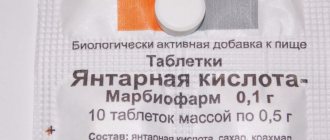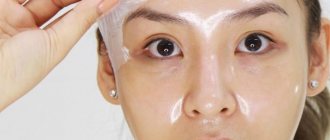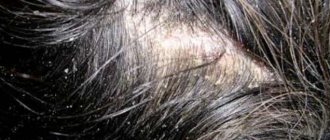Seasonal allergies: systemic effects
The allergy season in Russia begins in mid-April (plus or minus adjustments depending on the climate zone). Hay fever is associated with plant allergens that appear in the air when plants begin to flower (pollination). An immunological reaction when pollen enters the body with inhaled air, as a rule, is expressed in the form of symptoms of rhinnorea, sneezing, itching and swelling of the eyelids and nasal mucosa, lacrimation, and redness of the eyes.
Allergic manifestations of hay fever can be affected by local and systemic means. Local include nasal and eye drops and sprays, systemic include antiallergic or antihistamines for oral administration and injection. Most antiallergic drugs are over-the-counter, and there are a lot of people suffering from seasonal allergies, so from year to year, starting in spring, pharmacists are faced with the need to offer, advise, and sell customers a product that will help them get rid of an unpleasant condition. Most often (and this corresponds to clinical recommendations), the choice falls on systemic drugs, by taking which you can immediately get rid of all the symptoms that cause discomfort. In our article we will review the antihistamines for internal use currently available in Russia, and recall the features of the use of some of them. In this case, we are not interested in injectable forms, since they are used for quick help in emergency conditions.
Quite a lot of antiallergic drugs for oral administration have been synthesized, however, they are all divided into two generations. Drugs based on active metabolites and stereoisomers do not belong to the third generation. According to the scientific views enshrined in the Antihistamine Consensus, the as-yet-undeveloped third-generation antihistamine would have to be fundamentally different from existing compounds.
The basic principle of the drugs is to block the well-known H1-histamine receptors.
Oldies
1st generation antihistamines (diphenhydramine, chloropyramine, clemastine, dimethindene, mebhydrolin, promethazine) are also called sedatives due to the most important and common side effect. However, in the desire to help, it is wrong to recommend such drugs to people with concomitant insomnia, since sleep will not be physiological, and its quality will suffer. As a result, a person will still feel sleep-deprived and feel drowsy during the day. In addition to sedation, their use is accompanied by depression of cognitive functions and a decrease in reaction speed. Representatives of the group are non-selective and can block alpha-adrenergic receptors, muscarinic, serotonin, M-cholinergic receptors and others. This causes their side effects and contraindications. For example, “old” generation medications cannot be prescribed for angle-closure glaucoma, prostate adenoma, gastric and duodenal ulcers, intestinal and bladder atony, cardiovascular diseases, and bronchial asthma. When counseling older people, this point is important, since they often have such pathologies.
Medicines in this group are not used for more than 7-10 days, since the body gets used to it and the effect of the medicine is weakened. 1st generation drugs bind to histamine receptors competitively, so their complex is quickly destroyed. You need to take these medications 3-4 times a day, which is inconvenient.
On the other hand, their use is justified in a number of cases, precisely due to their non-selectivity (antiemetic, anti-anxiety effect, etc.) and the presence of injectable forms, which is important in emergency situations.
As for allergic rhinitis (seasonal and year-round) and for hay fever, the use of 1st generation antihistamines is undesirable, since they, having an M-cholinergic effect, can cause dry mucous membranes, increase the viscosity of secretions and contribute to the development of sinusitis and sinusitis.
Representatives
Diphenhydramine is a prescription drug in all dosage forms with a pronounced sedative effect. One of its uses is seasickness and air sickness. Cannot be used with ethanol and UV radiation should be avoided when taking.
Chloropyramine is a classic antagonist of H1 - 1st generation histamine receptors.
Dimetindene is the only antihistamine approved for children from the first month. In children under one year of age, it is used under the strict supervision of a doctor. It has all the characteristic properties of representatives of the 1st generation. It is also available in the form of extended-release capsules for once daily dosing.
Mebhydrolin - unlike other representatives, penetrates slightly into the central nervous system, so the sedative effect is rather weakly expressed.
Clemastine - similar in pharmacological properties to diphenhydramine, has a strong antihistamine and antipruritic effect, duration of action is 12 hours, therefore, unlike other drugs in the group, it is taken twice a day.
Beginners
2nd generation antihistamines (cetirizine, levocetirizine, loratadine, desloratadine, rupatadine) have significant advantages compared to the first group. These are the lack of sedation in most patients, highly specific long-term binding of histamine H1 receptors and lack of affinity for other receptors. The medication does not depend on food intake, tachyphylaxis does not occur, which means it can be taken for a long time. Another advantageous feature of these drugs is their anti-inflammatory effect.
“New” generation drugs are taken once a day.
Nota Bene! Although the new generation does not cause sedation, in some individual cases such side effects are possible. Buyers should be warned about this.
Representatives
Cetirizine is an active metabolite of hydroxyzine, developed in 1987 and became the first highly selective H1 blocker. It still remains the “gold standard” in allergy therapy and a standard for comparison. Effective for 24 hours, the effect after the end of administration lasts up to three days. Children's forms are allowed from 6 months. Use in children 6-12 months. under the strict supervision of a doctor.
Levocetirizine, the active enantiomer of cetirizine, has twice the affinity for H1 receptors as cetirizine. Has fast action. Does not require hepatic metabolism, its bioavailability is almost 100%. It has a minimum of side effects, minimal possibility of interaction with other medications, and can be prescribed for liver diseases.
Loratadine is a metabolized drug. When passing through the liver, it is transformed into the active metabolite desloratadine. Therefore, its effect may vary depending on the condition of the liver. This factor must be taken into account if the patient is taking additional medications or has liver disease.
When taken together with inducers of liver enzymes of the cytochrome P450 system (ethanol, St. John's wort, barbiturates, etc.), the therapeutic effect will decrease, and when taken with inhibitors (erythromycin, ketoconazole, cimetidine, etc.), side effects may appear/intensify.
Rupatadine is a relatively new drug and is found in pharmacies and prescriptions quite rarely. It is also metabolized in the liver to desloratadine, 3-hydroxydesloratadine, 5-hydroxydesloratadine and 6-hydroxydesloratadine. The drug can cause fatal arrhythmia, so it is prescribed with caution to patients with a prolonged QT interval, hypokalemia, persistent proarrhythmic conditions, such as clinically significant bradycardia, acute myocardial ischemia. It is not recommended to take rupatadine with grapefruit juice, macrolides, antifungal drugs (imidazole derivatives), or simultaneous use with statins. Age 65 and older is a reason to choose an alternative.
Desloratadine is an active metabolite of loratadine. It is superior in potency to loratadine. Its effect is more predictable and does not depend on the activity of enzymes of the cytochrome P450 system. When taking other medications, the problem of drug interactions is eliminated. Liver diseases do not affect its effectiveness.
The following medications should be highlighted separately:
Intermediate position
Hifenadine and Sehifenadine have a similar structure and stand apart because they have both the properties of the first and second generation. They do not penetrate the BBB, do not depress the central nervous system and are devoid of sedative and hypnotic effects. They do not affect adrenergic and M-cholinergic receptors. But, like 1st generation drugs, they have a short effect and are prescribed 2-3 times a day.
Mast cell stabilizers
Ketotifen is a special drug among antiallergic drugs. Sometimes it is referred to as the 1st generation. Stabilizes mast cells and prevents histamine and other mediators from being released. It also has a weak H1-blocking effect. Prescribed for a period of at least 3 months, 2 times a day. Cancel gradually, over 2-4 weeks. Since the effect develops over 1-2 months, people suffering from hay fever should start taking it in advance. The main indication of ketotifen is bronchial asthma.
Cromoglicic acid - although it has an oral form, is taken orally only for food allergies; for hay fever, it is used in the form of nasal and eye drops, sprays and aerosols. The effect occurs after a few days or weeks, so you need to start using the drug well in advance, before the onset of the flowering season. In this case, its use will be most effective. Therapy is carried out throughout the season.
The choice of systemic antihistamine for hay fever depends on many factors. Data on effectiveness, convenience and safety of use clearly indicate in favor of drugs from the 2nd generation. Having information on all the drugs available in the arsenal, it will be easy to suggest the right drug and argue your professional point of view.
Table of drugs:
| INN | Medicine | Release form | Release from pharmacy | Patient age | |
| 1st generation | Diphenhydramine | Diphenhydramine | tablets, solution for IM and IV administration | On prescription | Injections from 7 months, tablets from 14 years |
| Chloropyramine | Suprastin, Chloropyramine, Suprilamin | tablets, solution for IM and IV administration | Ampoules - with prescription, tablets - without prescription | Injections from 1 month, tablets from 3 years | |
| Clemastine | Tavegil, Clemastine | tablets, solution for IM and IV administration | Ampoules - with prescription, tablets - without prescription | Injections from 1 year, tablets from 6 years | |
| Dimetinden | Fenistil, Fenistil 24, Dimetinden, Acrystil, Phenicitol | oral drops, extended-release capsules | Over the counter | Drops from 1 month, capsules from 12 years | |
| Mebhydrolin | Diazolin | tablets, po tablets, dragees | Over the counter | From 3 years | |
| Promethazine | Pipolfen | solution for IM and IV administration | On prescription | From 2 years | |
| Intermediate position | Hifenadine | Fenkarol | tablets, solution for intramuscular administration | Ampoules - with prescription, tablets - without prescription | From 3 years, injections and tablets 50 mg from 18 years |
| Sehifenadine | Histaphene | pills | On prescription | From 18 years old | |
| 2nd generation | Cetirizine | Cetrin, Zodak, Zirtec, Zincet, Alerza, Parlazin, Sensinor, Cetirizine, Solonex, Zincet, Cetrinax | tablets coated po, syrup, drops for oral administration | Over the counter | Tablets from 6 years, syrup from 2 years, drops from 6 months |
| Levocetirizine | Cetrin L, Allerway, Allerway Express, Levocetirizine, FRI-AL, Lazin 5.0, Alerset-L, Zodak Express, Elcet, Suprastinex, Glencet, Xyzal | tablets coated po, dispersible tablets, drops for oral administration | Over the counter | Tablets from 6 years, drops from 1 year | |
| Loratadine | Lomilan, Alerpriv, Clarisens, Clarifer, Claridol, Claridol Allergo, Claritin, Loratavel, Loratadine, Loragexal, Erolin | tablets, lozenges, syrup, oral solution, oral suspension | Over the counter | Tablets from 3 years, syrup, suspension and solution from 2 years | |
| Desloratadine | Erius, Lordestin, Blogir-3, Nalorius, Desloratadine, Eritadine, Delorsin, Eslontin, Elisey, Ezlor Solution Tablets, Ezlor, Dezal | po tablets, tablets, dispersible tablets, syrup, oral solution | Over the counter | Tablets from 12 years, syrup and solution from 1 year | |
| Rupatadin | Rupafin | pills | Over the counter | From 12 years old | |
| Mast cell stabilizers | Ketotifen | Ketotifen | tablets, syrup | On prescription | Tablets from 1 year, syrup from 6 months |
| Cromoglicic acid | Nalkrom, Mirokrom | capsules | On prescription | From 2 years |
TABLE FOR DOWNLOAD
Interested in the article? You can find out even more in the section Working in a pharmacy
Types of allergies
Depending on the allergen, the following types of allergies are distinguished:
- allergy to pollen (hay fever);
- food allergies;
- for insect bites;
- animal hair;
- medicines;
- chemical irritants (for example, household chemicals);
- other types of allergies (to alcohol, sun, cold, etc.).
Figure 1. Types of allergies. Image: inspiration/freepik.com
The principle of action of antiallergic eye ointments
Ointments serve exclusively to eliminate allergy symptoms on the eyelids , but if the root cause (the allergen to which such a reaction occurs) is not detected, the effect will be short-lived.
Attention! Such drugs can be used in cases of severe allergic reactions to minimize discomfort and irritation.
Antihistamines contain not only anti-allergenic components that block histamine receptors, but also steroidal and non-steroidal anti-inflammatory elements.
Minerals and vitamins that are included in the composition have an additional general strengthening and immunostimulating effect.
But the effect of using such drugs can be the opposite if a person is allergic to the components included in the drug .
A simple test in which a small amount of the product is applied to the inner bend of the elbow allows you to avoid mistakes when prescribing such ointments.
Causes of allergies
The cause of an allergy is an allergen. Science and medicine figured this out a long time ago. As for the reasons for increased sensitivity to a particular substance, there are many mysteries. For an unknown reason, excessive activation of immune cells (mast cells and basophils) occurs in response to the appearance of an allergen in the body. An inflammatory process is initiated, which can be mild (runny nose, lacrimation, itching) or life-threatening (anaphylactic shock, Quincke's edema).
In developed countries, a constant increase in the number of allergy sufferers is recorded. The exact reason for this phenomenon has not yet been established. Today, the dominant theory in this sense is the hygienic theory¹. It was put forward by David Strachan in 1989. According to this hypothesis, excessive hygiene leads to an undertaxed immune system. As a result, the immune system begins to react to harmless antigens such as plant pollen or animal fur.
Reviews
“Almost every year in late spring I develop allergies to different types of plants.
It was not possible to determine exactly what exactly is such an allergen for me.
Therefore, no prophylactic or preventive measures help me, but I found a way out.
When spring comes, I buy a tube of dexamethasone - it lasts about a month , after which the flowering goes away and I can feel calm without such medications.”
Denis Kirillov, Volgodonsk.
“At the age of three months, my baby began to develop allergies to the feeding formulas that we started using.
This manifested itself in the form of redness and rashes on the skin, and these symptoms were especially severe on the skin around the eyes .
Classification of allergy drugs
The most common allergy medications are antihistamines. Histamine is a mediator of allergic reactions. It binds to receptors on the skin, mucous membranes, blood vessels and smooth muscles. Such binding leads to swelling of the nasal mucosa, bronchospasm, skin and intestinal reactions.
Antihistamines bind to histamine receptors, blocking them. Thus, histamine is not able to realize its allergenic effect. All antihistamines are divided into 3 groups:
- 1st generation drugs. The earliest class of antihistamines. Such medicines act quickly and effectively. However, their effect is short-lived, requiring two or three doses per day. Another significant drawback of such drugs is the sedative effect. The patient becomes sleepy after such remedies. Therefore, they should not be taken if you are driving or working in a hazardous industry.
- 2nd generation drugs. These medications have a longer duration of action. As a rule, this is 12-24 hours. Therefore, they are taken 1-2 times a day. Another advantage of 2nd generation antihistamines is a relatively small number of side effects. They do not cause drowsiness, which means they can be used by drivers and people who work in potentially hazardous industries.
- 3rd generation drugs. These are the newest allergy drugs, which are metabolites of the active substances of the 2nd generation. It is believed that such drugs are more effective and safer, but the medical community does not yet have enough data on this matter.
It is impossible to unequivocally answer which drugs are the best for each patient. In case of allergies, drug treatment is carried out taking into account the exact diagnosis, the presence of sensitivity, the patient’s current diseases and a number of other factors. Therefore, the best remedy for allergies is the one that helps you quickly and effectively cope with the body’s abnormal reaction to the allergen.
Allergen test. Photo: alexraths/Depositphotos
Popular questions and answers
Regarding the treatment of allergies and the use of antihistamines, we talked with a general practitioner, endoscopist, and head of the organizational and methodological office, Lydia Golubenko.
Why might allergies occur?
While we cannot say for sure what triggers the allergy. We can definitely say that hereditary predisposition plays a certain role: if parents suffer from allergies, the risks in children increase to 50 - 80%. In addition, the immune system suffers from external factors - poor ecology, various foreign substances that enter the body (dyes, preservatives, excess medications used without a doctor’s permission). One theory is the excessive cleanliness and almost sterile conditions that we create for our children after birth. This prevents the immune system from being exposed to infections and learning, so it overreacts to allergens.
What to do if you have an allergy?
The best decision is to go to the doctor. Under the guise of allergies, various infections, fungal skin infections and somatic diseases can occur. You need to do allergy tests, determine the specific substance that causes the reaction, and only then, together with the doctor, choose the optimal treatment. By the way, these will not always be medications; sometimes it’s enough just to remove the allergen from your life and the reactions will stop.
When is it necessary to call a doctor at home?
An allergy is not such a serious condition that you need to call a doctor at home. But there is one exception - acute anaphylactic reactions that develop from insect bites, taking certain medications or dangerous foods. These reactions develop sharply and quickly, swelling of the throat or shock occurs, and you need to immediately call an ambulance and take the person to the hospital, where dangerous reactions will be relieved. Experienced allergy sufferers generally carry with them everywhere a first aid kit with syringes and ampoules of medications that need to be administered immediately.
Is it possible to do the treatment yourself?
Although most antihistamines are sold in pharmacies without a prescription, you should not self-medicate. In addition to their indications for use, medications also have a number of side effects and contraindications that can only be assessed by a doctor. Therefore, antihistamines should be selected only with a specialist. Choosing the best allergy pills is not easy; it is important to take into account the type of allergy - food, skin, hay fever, as well as the age of the patient and any additional pathologies he has.
Any medications have side effects and contraindications. Our rating is a review and is not a guide to action. Before purchasing medications, consult your doctor.
Sources:
- Sidorovich O.I., Luss L.V. Food allergy principles of diagnosis and treatment // MS. 2016. No. 16. https://cyberleninka.ru/article/n/pischevaya-allergiya-printsipy-diagnostiki-i-lecheniya
- Campbell A., Michel FB, Bremard-oury C., Crampette L., Bousquet J. Review of allergy mechanisms // Difficult patient. 2013. No. 5. https://cyberleninka.ru/article/n/obzor-mehanizmov-allergii
- Minaeva N.V., Shiryaeva D.M. Hay fever and supporting information resources. RMJ. Medical Review. 2021;5(1):38-42. DOI: 10.32364/2587-6821-2021-5-1-38-42.
- Torshkhoeva Raisa Magometovna Allergies and antihistamines // PF. 2008. No. 3. https://cyberleninka.ru/article/n/allergiya-i-antigistaminnye-preparaty
TOP allergy drugs
Below we look at the 15 most common active ingredients against allergies. Please note that the name of the active substance often does not coincide with the name of the medicine.
Chloropyramine
Generation: first
Trade names: “Suprastin”, “Suprilamin”, “Suprivell”, “Gistaprim”, “Chloropyramine”.
Chloropyramine is mainly available in tablets. But there are also forms for intramuscular administration. The drug has a pronounced antihistamine effect. Relief occurs within 15-30 minutes after administration². After an hour, the maximum concentration of the drug in the blood is reached.
Chloropyramine-based medications usually work within 4-6 hours. Such products not only block the production of histamine, but also relieve swelling and itching. Chloropyramine also has an inhibitory effect on the central nervous system (calming and sedative effects).
Contraindications: hypersensitivity to the components of the drug, severe forms of prostate adenoma, pregnancy and breastfeeding.
Clemastine
Generation: first
Trade names: “Tavegil”, “Clemastin”, “Clemastin-Eskom”.
Preparations with clemastine are available in tablets, syrups and solutions for intramuscular administration. This is an over-the-counter medicine that works within 8-12 hours.
Clemastine is used to suppress acute allergic reactions. Also used in the complex treatment of anaphylactic reactions.
Contraindications: hypersensitivity to the components of the drug, age under 6 years (tablets) or under 1 year (syrup or injections), pregnancy, breastfeeding.
Loratadine
Generation: second
Trade names: “Claritin”, “Klarnedin”, “LoraGexal”, “Clarifer”, “Erolin”, “Clarotadine” and others.
Loratadine helps cope with the classic symptoms of allergies - sneezing, itching and runny nose³. The therapeutic effect of the drug occurs quickly, after 30-40 minutes and lasts up to 24 hours.
Side effects of loratadine include headache (in 12% of cases), drowsiness (8%), fatigue (4%). In rare cases (less than 2%), loratadine impairs concentration.
Contraindications: hypersensitivity to the components of the drug, children under 2 years of age.
During pregnancy, loratadine is taken if the expected benefit outweighs the potential risk to the fetus.
Figure 2. Allergy symptoms. Image: inspiration/freepik.com
Cetirizine
Generation: second
Trade names: “Zirtec”, “Zintset”, “Alerza”, “Zodak”, “Parlazin”, “Cetirizine”, “Solonex” and others.
Cetirizine has a long-lasting antiallergic effect and is practically free of sedative effect. The drug relieves swelling and itching. During the flowering season, cetirizine preparations can also be used for preventive purposes.
The most common form for cetirizine is tablets. Also available in the form of drops. Used to relieve nasal, eye and skin allergy symptoms.
Contraindications: hypersensitivity to cetirizine, late stage of renal failure. Cetirizine in the form of drops is not prescribed to children under 6 months. Tablet forms of the drug are allowed from the age of 6 years. Cetirizine should not be used during pregnancy due to the lack of clinical studies regarding its safety in pregnant women.
Desloratadine
Generation: third
Trade names: “Erius”, “Espontin”, “Lordestin”, “Nalorius”, “Delorsin”, “Desloratadine”, “Dezal”, “Blogir-3” and others.
Medicines based on desloratadine are available in the form of tablets or syrup. The active substance has a long-term antiallergic and anti-inflammatory effect, which lasts up to 24 hours.
Desloratadine is used to treat seasonal and perennial allergic rhinitis and urticaria.
Contraindications: hypersensitivity to the components of the drug, pregnancy and breastfeeding. The syrup should not be taken by children under 1 year of age, and tablet forms of the drug should not be taken by children under 12 years of age.
What to do if you don’t have the drug at hand?
- Even disciplined allergy sufferers (who always carry the necessary medications with them) can find themselves in a situation where there is no life-saving remedy at hand. In such situations, you need to act depending on the type of allergy:
- For allergies to pollen. Rinse your eyes, face and hair. Change clothes as quickly as possible. A lot of pollen settles on hair and clothes.
- For food allergies. Drink more water. If the allergic attack does not subside, induce vomiting.
- If you are allergic to an insect bite. To relieve swelling and inflammation, apply something cold to the bite. This can be a bottle of cold water or a towel soaked in water. If you have ice on hand, wrap it in a cloth and apply it to the bite. Do not apply ice to bare skin!
Diphenhydramine
Generation: first
Trade names: "Diphenhydramine".
Diphenhydramine is available in the form of tablets, gels and solutions for intramuscular administration. The drug is used for a wide range of allergic diseases, including hay fever, vasomotor rhinitis, urticaria, anaphylactic shock and others. Diphenhydramine is also used in the treatment of bronchial asthma, gastric ulcers, sea and airborne illnesses.
Preparations in the form of a gel are used to treat skin allergic diseases and sunburn.
Contraindications: hypersensitivity to the components of the drug, breastfeeding, childhood (newborn period).
Important!
Drugs containing diphenhydramine are used with caution in glaucoma, pregnancy and prostate adenoma. In such cases, the doctor assesses the potential risks of the drug, on the basis of which he decides whether to prescribe the medicine or not.
Ebastine
Generation: second
Trade names: “Ebastine”, “Espa-Ebastine”, “Kestin”, “Zirtal-10”.
Products with ebastine are used for allergic rhinitis, chronic urticaria and diseases with high histamine release.
Contraindications: hypersensitivity to the drug, pregnancy, age under 12 years.
Mebhydrolin
Generation: first
Trade names: "Diazolin".
Diazolin is available in tablets or dragees. It is effective for allergic rhinitis, hay fever, allergic conjunctivitis and skin allergic manifestations. It is also used in the complex treatment of itchy dermatoses.
Contraindications: hypersensitivity, exacerbation of gastric and duodenal ulcers, inflammatory diseases of the digestive system, prostate adenoma.
Astemizole
Generation: second
Trade names: “Gistalong”, “Asmoval 10”, “Mibiron”, “Stemiz”.
Preparations containing astemizole are available in the form of tablets and suspensions. Used for nasal, eye and skin allergic reactions. Also used for adjuvant therapy of bronchial asthma.
Contraindications: hypersensitivity, pregnancy and breastfeeding, children under 2 years of age.
Allergy medicine should be in every first aid kit. Photo: ufabizphoto / freepik.com
Promethazine
Generation: first
Trade names: "Pipolfen".
Promethazine is used for a wide range of allergic reactions. These are numerous skin manifestations, drug allergies, asthmatic bronchitis, anaphylactic and anaphylactoid reactions. The drug is also used for rheumatic lesions, neuralgia, neurosis-like conditions and psychoses.
Contraindications: hypersensitivity, coma, combination with monoamine oxidase inhibitors (MAO). Promethazine should not be taken in a state of alcohol intoxication, renal or liver failure. The drug is prohibited during pregnancy, breastfeeding and in early childhood under 6 years of age.
Hormonal medications for allergies
For allergies, not only antihistamines are used, which our material is devoted to.
In severe forms of an allergic reaction, corticosteroids are also used to relieve the inflammatory process. These are hormonal anti-inflammatory drugs that have a pronounced effect. Corticosteroids are prescription medications that can only be prescribed by a doctor. They are used to relieve bronchospasms, skin lesions and nasal congestion. They are produced in the form of tablets, sprays, ointments, as well as solutions for injections.
Levocetirizine
Generation: third
Trade names: “Xizal”, “Suprastinex”, “Glenset”, “Cetrin”, “Zodak”, “Elcet”.
Levocetirizine is available in the form of tablets and drops. Used for year-round and seasonal allergic rhinitis and conjunctivitis. The drug is effective for hay fever, urticaria, and allergic skin diseases.
Contraindications: hypersensitivity to levocetirizine, cetirizine, hydroxyzine and other piperazine derivatives. The drug should not be taken in case of end-stage renal failure, as well as in children under 2 years of age (drops) and 6 years of age (tablets).
Akrivastine
Generation: second
Trade names: Semprex.
Akrivastine is available in capsule form. The medicine is used against allergic rhinitis, as well as allergic skin reactions. The sedative effect is weak. However, in rare cases, such a side effect does occur (like insomnia). The antihistamine effect of acrivastine lasts approximately 12 hours.
Contraindications: hypersensitivity, pregnancy and lactation, children under 12 years of age, severe renal failure.
Azelastine
Generation: first
Trade names: “Azelastine-Xantis”, “Allergodil”.
The drug is available in the form of a nasal spray and drops (nasal and eye). Used to treat seasonal or year-round allergic rhinitis and conjunctivitis.
Contraindications: hypersensitivity to the drug, pregnancy, breastfeeding. Eye drops should not be used by children under 4 years of age, and sprays and nasal drops by children under 6 years of age.
Dimetinden
Generation: first
Trade names: “Fenistil”, “Phenicitol”, “Dimetinden”, “Allergolan”, “Akristil”.
Antiallergic drugs based on dimethindene are used for external use and oral administration. Available in the form of drops, capsules, gels and emulsions.
Capsules and drops for internal use are prescribed for hay fever, urticaria, eczema, angioedema, food and drug allergies, as well as reactions to insect bites.
Gels and emulsions for external use are used for itchy dermatoses, urticaria, and burns.
Contraindications: hypersensitivity, 1st trimester of pregnancy, newborn period.
Fexofenadine
Generation: third
Trade names: “Allegra”, “Fexofast”, “Telfast”, “Fexadin”, “Fexofen”.
Fexofenadine is produced in the form of tablets, capsules and drops. It is used to treat urticaria, itching, and allergic symptoms of the upper respiratory tract4.
Contraindications: hypersensitivity to the components of the drug, children under 6 years of age.
Sprays and drops
Since the treatment must be comprehensive, a nasal spray acts as an additional antiallergic agent. After reading customer reviews, we have compiled a rating of the TOP 3 remedies against allergic rhinitis.
| Name | Type of drug | pros |
| Tizin Alerji | Vasoconstrictor | Fast action, long lasting results, no side effects. A small single dose is required, so the drug is economical. Approved for use by children and pregnant women. |
| Avamis (adults only) | Hormone | Reduces the inflammatory effect, lasts for at least eight hours. |
| Allergodil | Antihistamine | Does not contain hormonal substances. The drug can be used as a prophylaxis. |
To eliminate itching and watery eyes, as well as conjunctivitis, special drops are prescribed. Let's look at the best products, according to buyers.
| Name | Type of drug | pros |
| Visine | Vasoconstrictor | Quickly relieves swelling and inflammation, allowed for children from two years of age. |
| Allomide | Antihistamine | Blocks the first type of receptors. The drug is used in the treatment of conjunctivitis, as well as as a prophylaxis. |
| Diclofenac | Non-steroidal | The drug relieves inflammation and has an analgesic effect. Eliminates lacrimation. |
Sources
1. Scudellari M. (2017).
News Feature: Cleaning up the hygiene hypothesis. Proceedings of the National Academy of Sciences of the United States of America, 114(7), 1433–1436. https://doi.org/10.1073/pnas.1700688114 2. State register of medicines. Instructions for use of the drug for medical use CHLOROPYRAMINE https://grls.rosminzdrav.ru/ImgInstr.aspx?folder=ScanVavilova&Filepath=\Vneseno_v_Grls\454954\IP&idReg=160167&isOld=1&fileType=jpg&pfolder=2
3. Tenn MW, Steacy LM, Ng CC, Ellis AK. Onset of action for loratadine tablets for the symptomatic control of seasonal allergic rhinitis in adults challenged with ragweed pollen in the Environmental Exposure Unit: a post hoc analysis of total symptom score. Allergy Asthma Clin Immunol. 2018;14:5. Published 2022 Jan 16. doi:10.1186/s13223-017-0227-4
4. Axelrod, David, and Leonard Bielory. “Fexofenadine hydrochloride in the treatment of allergic disease: a review.” Journal of asthma and allergy vol. 1 19-29. 19 Sep. 2008, doi:10.2147/jaa.s3092
What can you be allergic to?
The eight most common things that can cause an allergic reaction in some people include:
- I'm on my way
- House dust
- Pollen from flowering plants
- Pet dander, saliva or urine
- Mold
- Insect and reptile bites and venoms
- Latex
- Certain medications (primarily antibiotics)
The list is not exhaustive; in addition, some items contain dozens and sometimes hundreds of names of possible allergens.
What exactly triggers the development of allergies? There is no clear answer to this question yet. Let's look at the example of food allergies.
The prevalence of food allergies, especially to peanuts, appears to have increased from the late 1990s to the early 2010s. Although there are a number of hypotheses regarding the apparent increase in the prevalence of food allergies, especially peanut allergies, there are still no definitive answers. Postulated hypotheses focus on hygiene, dietary fat, antioxidants, vitamin D, and dual allergen exposure (i.e., initial exposure to a food allergen through a nonoral route, such as through the skin). There is some evidence to support these hypotheses, explaining the increased risk of asthma and allergic rhinitis. However, data on the role of these hypotheses in increasing the prevalence of food allergy are limited.
- Hygiene hypothesis.
Exposure to infectious pathogens early in life, as well as normal gut microbiota, can influence the development of the immune system from T helper type 2 (Th2) to T regulatory cell responses. Paradoxically, better hygiene leading to less exposure to germs may lead to an increase in atopic diseases. - Microbiome depletion hypothesis
. Derived from the hygiene hypothesis. The human body's ecosystem can influence immune function. Loss of diversity in the human microbiome can lead to allergies, autoimmune diseases and other disorders associated with increased inflammation. - The short-chain fatty acid hypothesis
. A specific microbiome may contribute to high concentrations of short-chain fatty acids such as butyrate, propionate, or acetate, which may contribute to reduced food sensitization. - Dietary fat hypothesis
- This hypothesis postulates that decreasing the intake of n-3 fatty acids (eg, omega-3 fatty acids) and increasing the intake of n-6 fatty acids (eg, vegetable oils) leads to greater production of immunoglobulin E (IgE), mediated prostaglandin E2. - Antioxidant hypothesis
. This hypothesis states that antioxidants found in fresh fruits and vegetables, such as vitamin C and beta-carotene, have protective anti-inflammatory effects. Thus, a diet that includes more processed foods and less fresh foods may increase susceptibility to allergies. - Vitamin D Hypothesis
– Vitamin D has been shown to have immunomodulatory effects. Proposed but unproven theories suggest a role for both excess and deficiency of vitamin D in the development of allergic diseases. - The dual allergen exposure hypothesis
suggests that food sensitization is more likely to occur in a young child if the initial exposure is a low dose and through the skin rather than a high dose through the intestines. - A food industry hypothesis
is that how foods are processed can also influence allergenicity. This may result in different prevalences in different cultures. For example, roasting and emulsifying peanuts to produce peanut butter can alter the proteins and allow them to be presented to the immune system in a way that can contribute to the development of allergic reactions. Peanut allergy rates are lower in countries where peanuts are mostly boiled rather than roasted. - Other hypotheses
are that enterotoxins derived from Staphylococcus aureus commonly cause food contamination. Staphylococcal superantigens are also associated with atopic dermatitis.
Allergy to pollen from flowering plants also has its own characteristics, primarily seasonality, which is clearly related to periods of pollination. Pollen is produced on male or bisexual plants, which is why, for example, sometimes urban landscaping is done with female versions of common trees.
The ten most dangerous flowers and herbs in terms of allergies are as follows:
- Sagebrush
- Timothy grass
- Gypsophila
- Dahlias
- Chamomile
- Gerberas
- Chrysanthemums
- Ambrosia
- Sunflower
- Amaranth
Among the trees, the top ten most allergenic are as follows:
- Birch
- Ash (m)
- Topol M)
- Oak
- Alder
- Elm
- Maple (m)
- And you)
- Hazel
- Aspen (m)










